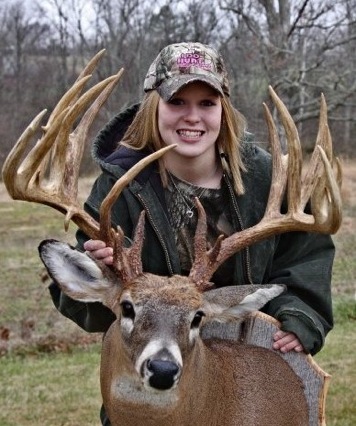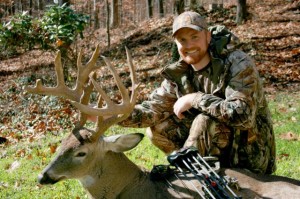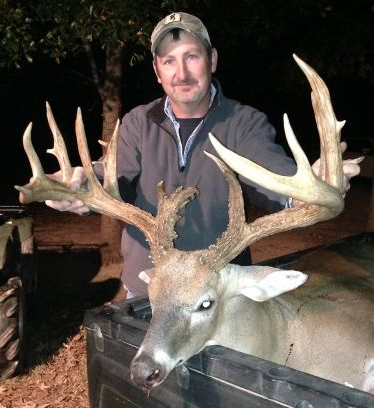
Throughout much of the whitetail’s range, the rut is fairly synchronous , occurring roughly about early to mid-November. As you move south, things change — sometimes dramatically. There are numerous mitigating factors, including climate, genetics, nutrition, sex ratio and radically different day lengths.
One of the biggest confounding factors involves adaptive strategies. Natural selection has programmed Northern deer to breed within a fairly narrow window. Their fawns must be born late enough so there’s enough available food for nursing mothers and early enough that fawns can mature enough to survive their first winter. That’s not so important for deer in the South, where spring comes early and winters are less severe.
Genetics is another related factor. Many parts of the South were restocked with Northern deer. Their genetic hard-wiring is still tuned into Northern day-length conditions. Mixing those deer with Southern genetic lines has resulted in intermediate breeding dates across the fall calendar.
Research has also shown that herd health has an influence. Dense herds and highly skewed sex and age ratios can throw off the rut’s timing.
This article summarizes what we know about peak breeding and rut dates from Southern states.
First, however, we must differentiate between peak rut and peak breeding. The rut encompasses all activity associated with breeding. This includes courtship rituals such as making and tending scrapes, seeking and chasing does, and sorting out male dominance through sparring and fighting. The peak rut is when all these activities are at their most intense, and bucks are most active and observable during daylight. Peak breeding is when the most does stand for a buck. The pair often seeks a secluded area and remains relatively sedate for a 12- to 24-hour period. Though there is considerable overlap, you can usually figure peak rut will occur about 10 days to two weeks before peak breeding.
Virginia/West Virginia
In Virginia, the rut is fairly typical of much of the northern part of the whitetail’s range. Virginia deer project coordinator Matt Knox puts peak breeding just after mid-November through most of the state, possibly a little earlier moving east. Conception data collected by the state also indicates most adult does are bred during a six- to eight-day period.
In West Virginia, Chris Ryan, supervisor of game management services, said peak rutting activity in his state occurs roughly from Nov. 8 through Nov. 14, with some slight variation from north to south, and peak breeding occurring slightly later. As you move south, things begin to change.
The Carolinas
Peak rut dates in North Carolina vary by more than a month on a geographical gradient. According to biologist Evin Stanford, the first peak occurs in the Lower Coastal Plain about Oct. 25. The Upper Coast Plain rut peaks about a week later, around Nov. 1. The Piedmont region has what you might consider a more typical mid-November peak. The Foothills rut peaks a week later, Nov. 21, and rut activity in the Mountains hits its apex at month’s end.
South Carolina is slightly different. According to deer and turkey program coordinator Charles Ruth, the rut there also spans a month, with breeding from mid-October to mid-November through much of the state. According to his data, about 80 percent of does conceive between Oct. 6 to Nov. 16. I’ve hunted the alleged mid-October peak in the Low Country but didn’t see much in the way of rutting activity. Ruth refined his window by noting that the last week in October and the first week in November represent peak breeding, with Oct. 30 being the peak conception date. However, he cautioned that breeding chronology occurs on a bell-shaped curve (see the sidebar).

Georgia
Georgia has an unusual range of peak breeding dates, which deer project coordinator Charlie Killmaster attributes at least partly to the warmer climate and deer restocking efforts. Hunters willing to travel in-state can enjoy peak rut from mid October to late January.
One such hunter is the Quality Deer Management Association Executive Director Brian Murphy. He’s hunted four peaks in one season within his home state. Murphy said peak rut occurs about the second week of October in the coastal counties, followed by a mid-November rut across the bulk of the state. Peak in the northern 15 counties occurs a week later, about Nov. 20, with peak in the extreme southwestern portion of the state coming almost a month later, in mid-December.
Florida
When it comes to rut dates, Florida is the exception to the exception. According to biologist Tony Young, does in extreme southern Florida might enter estrus as early as late July. At the opposite end of the spectrum is northwestern Florida (and some west-central areas), where the mean rut can be as late as early to mid-February. I’ve witnessed hard-horned bucks intently chasing does in mid-March. Rut dates between vary enough that you should probably consult a local source for accurate information.
Alabama
Alabama biologist Chris Cook also described his state’s peak breeding dates as highly variable, spanning from about Christmas to the first week of February. The difference occurs on somewhat of a north-to-south gradient, with deer in the state’s northern half breeding from Christmas until mid-January, and those in the southern half typically breeding from mid-January to the first week of February. I try to time my annual sojourn to the Black Belt region for peak rut around the third week in January. Cook also said there are some areas with late-November breeding and others with early- to mid-December breeding.
Mississippi
The Mississippi Department of Wildlife, Fisheries and Parks actually has a map on its website showing mean conception dates for the state. They progress in a roughly northwest-to-southeast direction, beginning in early December and ending in early February. Biologist Chad Daucus said hunters should remember that hunter-observable rutting activity peaks about two weeks before the mean breeding date.

Louisiana
According to biologist Scott Durham, Louisiana deer breed from September to February. The Louisiana Department of Wildlife and Fisheries also prepared a map of peek breeding dates. Rather than a clean north-to-south gradient, however, dates vary depending on the area, habitat and herd parameters. Breeding peaks in late October in southwestern Louisiana and late November in much of the northwestern portion of the state. There’s a late-December peak in the southeastern and north-central regions and in pockets of the northwestern part of the state. The last peak, in late January, occurs in a band roughly along the state’s eastern fringe. As in other states, hunters should remember there might be considerable variability and overlap along the margins of peak rut bands.
The Rest
Kentucky’s Lee McClellan said his state’s rut occurs the middle two weeks of November, with the peak coming a few days to a week earlier in western Kentucky.
Daryl Ratajczak in Tennessee said his state’s average conception dates vary slightly across the state, peaking Nov. 21 in the western part, Nov. 25 in the eastern portion and Nov. 17 in the two central regions.
Meanwhile, Brad Miller said Arkansas’ statewide mean conception date is Nov. 18, give or take a week.
Texas
We couldn’t do a comprehensive compendium of Southern rut dates without including Texas, particularly as deer researchers have already done such a good job of identifying intra-state variation in the Lone Star State. Here’s a look at how it breaks down for this year:
Peak Breeding Dates for Texas
Region Date
Gulf Prairies and Marshes
northern Sept. 30
southern Oct. 31
Post Oak Savannah Nov. 10
Pineywoods
southern Nov. 12
northern Nov. 22
Cross Timbers Nov. 15 to 17
Rolling Plains
south Nov. 20
north Dec. 3
Edwards Plateau
east Nov. 7
central Nov. 24
west Dec. 5
Trans-Pecos Dec. 8
Southern Texas Plains
east Dec. 16
west Dec. 24
Numerous theories exist on what triggers the rut and when it occurs. Although the contrary theories have not necessarily been disproved, state agency biologists and all peer-reviewed research seem to agree on one. Though the specific dates might vary considerably from one state to another — and even within some states — peak rut and breeding dates do not vary from year to year.














